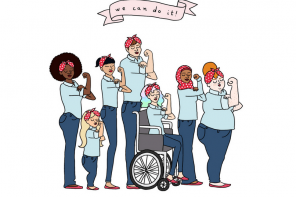Asma Uddin: “I started the online magazine called AltMuslimah [that is] wholly dedicated to stories and commentary on gender in Islam from the male and female, Muslim and non-Muslim perspectives. We cover a wide scope of issues, such as dating, marriage, divorce, sexuality, parenthood, work-life balance, women’s leadership and space in the mosque (and the broader community), women’s Islamic scholarship, gender roles, co-ed power dynamics, and much more. Just basically anything that falls under the umbrella of gender in Islam. And, of course, that includes beauty and fashion.“AltMuslimah was born out my personal struggle with my faith — what I call my ‘gender and religion crisis.’ The media constantly represented Muslim women as oppressed. Many women in my community, and even some in my family, were treated as second-class citizens, and my journey of wearing a hijab, and dealing with the hypocritical definitions of religiosity, posed one spiritual hurdle after another during my college years, which, of course, were some of my most formative years. Indeed the hijab, with all of its political, social, and spiritual implications, is at the center of many of my defining moments. As I’ve recounted elsewhere, I found my relationship with God was becoming primarily based on fear, rather than being properly balanced between love and fear. I worried incessantly about being judged by him and sometimes felt like his disapproval was manifesting itself and the anger I sensed within my community.”
MANY WOMEN IN MY COMMUNITY, AND EVEN SOME IN MY FAMILY, WERE TREATED AS SECOND-CLASS CITIZENS.
“Looking back, I see my plight as a necessary struggle. We all have important causes to which we are innately drawn. My cause has always been two-fold: women’s equality and Islam. For the world to make sense to me, women and men had to be at equal worth and dignity, just as Islam had to be the true religion. Before I encountered the extremists’ interpretation of Islam, my world seemed wonderfully whole. Afterwards, my world became fragmented. To glue it back together, I had to reconcile sex equality and Islamic piety…
“Now [along with editing the site], I also work full-time as an attorney defending the religious freedom of people of all faiths — both in the U.S. and internationally. And in that capacity, I witnessed time and again legal restrictions on Muslim women’s dress. Whether it’s burka bans, hijab bans, or, most recently in French schools, bans on long skirts. All of this gives new meaning to the phrase ‘fashion police.’ These legal restrictions reflect a deep-seated fear of Islam, so much so that public representations of it have to be coercively eradicated from the public space. And that truly gives me pause, because now this isn’t about our individual journeys navigated by our personal relationships with God, it’s about how the government tells us how best to live out and express our faith.
“Luckily, in the U.S., we see legal trends in the opposite direction. The U.S. government is actually defending a Muslim woman’s right to wear the head scarf in a case currently before the Supreme Court with the Equal Employment Opportunity division v. Abercrombie and Fitch stores. A young Muslim woman, Samantha Elauf, sought a job at Abercrombie in Tulsa, OK, that wouldn’t allow employees to wear anything on their heads. She didn’t get the job, because her hiring manager decided that she violated the store’s look policy. Abercrombie described its brand as a ‘classic, East Coast collegiate style of clothing. Wearing Abercrombie means styling oneself as a classic American.’ But what does that mean for Muslim women? Or religious believers more broadly, who, like Elauf, wear religious garb?”





